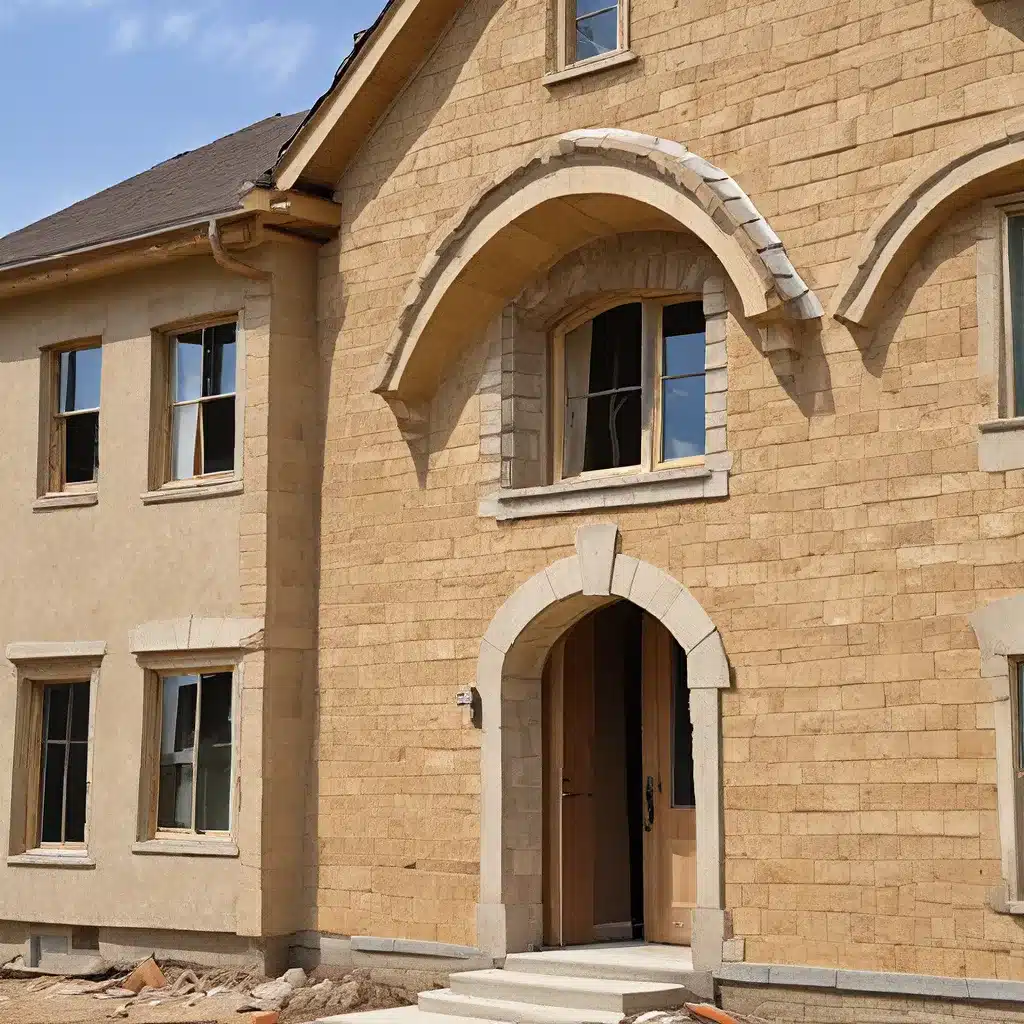
Fortifying the Fort: Safeguarding Your Sanctuary
Picture this: You’re a proud homeowner, gazing up at your abode, a fortress of your own making. But wait, is that a potential breach I see? A vulnerable entry point just begging to be exploited by ne’er-do-wells and malicious miscreants? Well, fret not, my fellow builders – I’m here to share some hard-earned wisdom on how to design a domicile that would make even the most seasoned siege engineer think twice before attempting an assault.
As a seasoned general contractor with a penchant for thinking outside the box, I’ve seen my fair share of homes that could give the mighty Minas Tirith a run for its money. From layered defenses to liquid metal armor, the possibilities for creating a truly impregnable personal stronghold are endless. And let me tell you, there’s nothing quite like the satisfaction of watching your handiwork withstand even the most determined of attacks.
Layered Defenses: Fortifying Your Fortress
Now, let’s dive into the nitty-gritty of fortifying your fortress. The key to a truly defensible domicile lies in the concept of layered defenses. It’s like the onion-like structure of Minas Tirith, with each level of the city providing an additional layer of protection. As the wise denizens of Reddit have noted, the ideal fortress should have multiple lines of defense, each one more formidable than the last.
Outer Perimeter: Setting the Stage
Start with the outer perimeter – the first line of defense against unwanted visitors. This could be a sturdy wall, a moat (though I’d recommend against the alligator-filled variety), or even a series of hidden traps and tripwires. Remember, the goal is to slow down and disorient potential intruders, giving you precious time to unleash your other defensive measures.
Inner Sanctum: Fortifying the Core
Once they’ve breached the outer defenses, intruders will have to face the inner sanctum – the heart of your fortress. This is where you pull out all the stops. Think thick, impenetrable walls (I’m talking 40 feet, like the mighty Storm’s End), reinforced with strategic loopholes for archers and snipers. And let’s not forget the importance of a well-concealed escape route – a secret passage that only you and your most trusted allies know about.
Liquid Metal Armor: The Ultimate Deterrent
But wait, there’s more! If you really want to take your home defense to the next level, consider incorporating liquid metal armor – the stuff of legends. Imagine the look on an intruder’s face as their battering ram suddenly melts into a puddle before their very eyes. It’s a level of protection that would make the Fortress of Iserlohn blush.
Defensive Innovations: Outsmarting the Outsiders
Of course, building a fortress isn’t just about brute force and intimidating architecture. It’s also about outsmarting your would-be attackers at every turn. That’s where defensive innovations come into play.
Deceptive Defenses: Misdirecting the Masses
One of my favorite tricks is the art of deception. Why rely on a single point of entry when you can have a dozen hidden entrances and exits, each one more confusing than the last? Imagine the bewilderment on an invader’s face as they stumble through a labyrinth of false walls and trap doors, only to find themselves back where they started, utterly disoriented.
Technological Safeguards: Automating the Onslaught
And let’s not forget the power of technology. In this age of innovation, we have access to all kinds of nifty gadgets and gizmos that can help us fortify our fortresses. Motion-activated alarms, security cameras, and even automated defense systems that can unleash a barrage of projectiles at the first sign of trouble – the possibilities are endless!
Natural Deterrents: Harnessing the Elements
But what if I told you that you don’t even need all the high-tech bells and whistles to create a truly formidable defense? Sometimes, the best solutions can be found in nature itself. Consider incorporating natural barriers like thick foliage, steep cliffs, or raging rivers into your home’s design. It’s like having Mother Nature herself as your personal bodyguard.
Overcoming the Impenetrable: Lessons from History
Of course, no matter how impregnable your fortress may seem, history has a way of reminding us that even the mightiest of strongholds can be breached. As the denizens of Reddit have pointed out, even the legendary Fortress of Iserlohn, with its formidable liquid metal armor, was eventually conquered. The moral of the story? Never underestimate the ingenuity and determination of your adversaries.
Adaptability: The Key to Survival
That’s why it’s essential to design your fortress with adaptability in mind. Be prepared to evolve your defenses as new threats emerge, and never rest on your laurels. Remember, the moment you become complacent is the moment your impregnable stronghold becomes vulnerable.
Contingency Planning: Facing the Inevitable
And let’s not forget the importance of contingency planning. Even the most well-designed fortress can fall, and when that happens, you’ll need to have a plan in place to ensure the safety of your loved ones. Whether it’s a hidden escape route, a secret cache of supplies, or a well-trained cadre of loyal defenders, being prepared for the worst is the key to weathering any storm.
Conclusion: Fortifying the Future
So there you have it, my fellow builders – the secrets to crafting a domicile that would make even the most seasoned siege engineer think twice before attempting an assault. From layered defenses to cutting-edge technology, the possibilities for creating a truly impregnable personal stronghold are endless.
Remember, the key to a successful fortress lies in thinking outside the box, embracing innovation, and never underestimating the determination of your adversaries. So go forth, build your impenetrable castles, and may your homes stand the test of time – and any would-be invaders foolish enough to test their mettle against your formidable fortifications.
Related posts:
No related posts.




